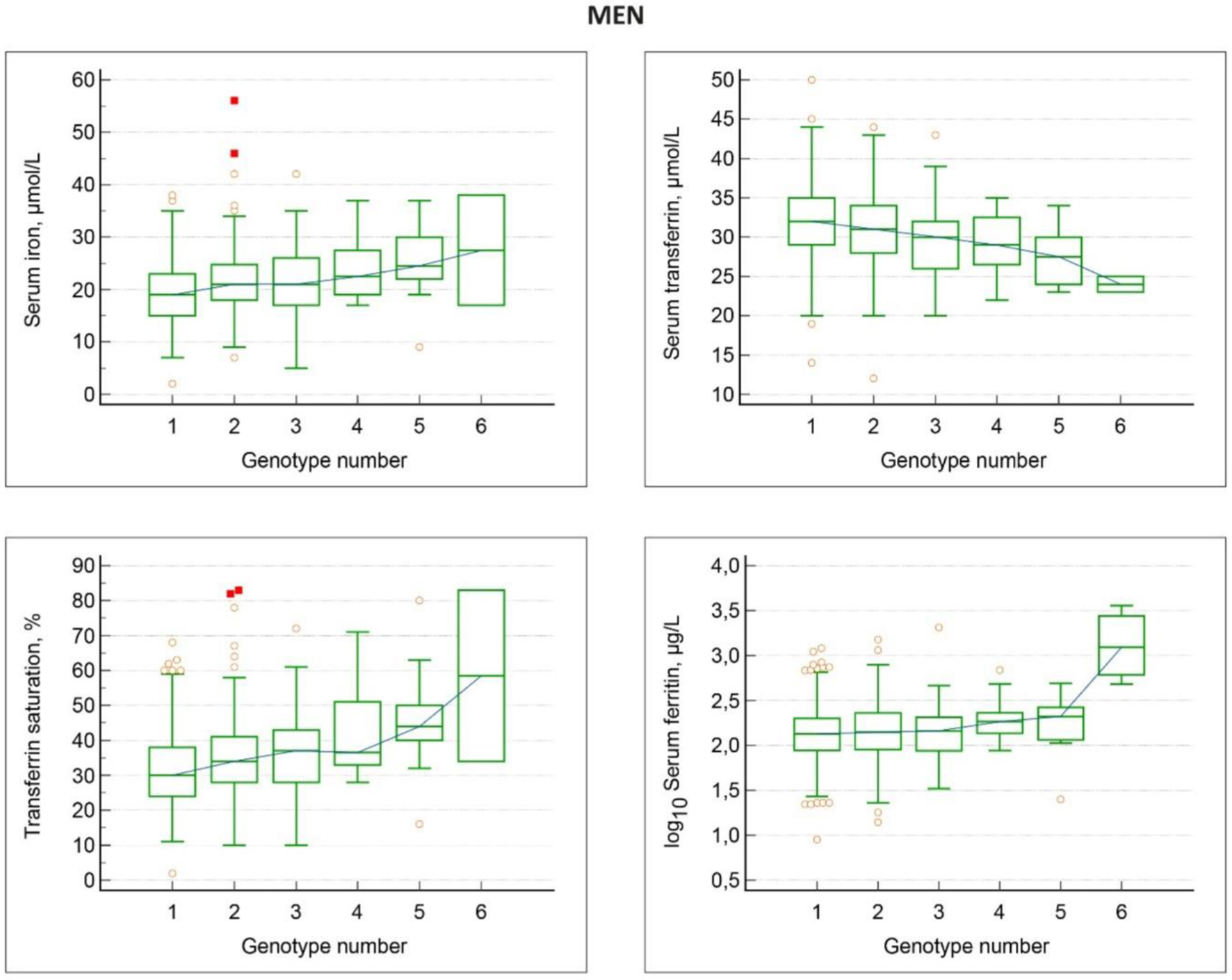Associations Between the HFE Genotypes and Iron Status Markers in an Apparently Healthy Population
DOI:
https://doi.org/10.14740/gr2021Keywords:
Danish people, Ferritins, Hemochromatosis, HFE protein, Human, Iron, Transferrin, Transferrin saturationAbstract
Background: The ethnic Danish population has high frequencies of the hemochromatosis gene (HFE gene) variants H63D and C282Y and clinical hemochromatosis is quite common. The objective of the study was to examine the impact of the combination of the HFE variants wildtype (wt), H63D, and C282Y on body iron status markers in a population of 2,613 apparently healthy ethnic Danish men and women.
Methods: An epidemiological population study was performed in Copenhagen County comprising a randomly selected population consisting of 1,342 men and 1,271 women. Blood samples were drawn in the morning in the fasting state for analysis of HFE genotypes and hematological iron status markers (hemoglobin, serum iron, serum transferrin, transferrin saturation, and serum ferritin).
Results: The HFE gene variants, H63D and C282Y, in any combination as well as in any combination with the HFE wt genotype, had a significant influence on iron status markers, compared with the wt/wt genotype. When arranged according to their relative frequency in the population, individuals with the six different HFE genotypes, i.e. wt/wt, H63D/wt, C282Y/wt, H63D/H63D, C282Y/H63D, and C282Y/C282Y, displayed gradually increasing levels of serum iron, decreasing levels of serum transferrin, and increasing levels of transferrin saturation in both genders. In men, ferritin increased gradually according to the HFE genotype. In women, ferritin levels were by and large independent of the HFE genotypes.
Conclusions: Using the iron status markers in HFE wt/wt individuals as a baseline, any other combination of the HFE genotypes had a significant impact on iron status. The C282Y/C282Y genotype was associated with the highest impact on iron status markers including serum ferritin and thus body iron overload. Due to physiological iron losses with menstruations and pregnancies, women are partly protected against significant body iron overload, regardless of the HFE genotype.

Published
Issue
Section
License
Copyright (c) 2025 The authors

This work is licensed under a Creative Commons Attribution-NonCommercial 4.0 International License.









